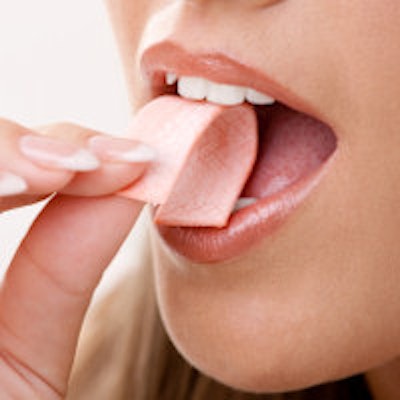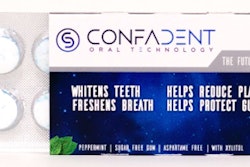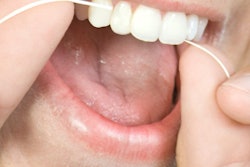
Chewing gum has been associated with oral benefits such as fighting caries and increasing salivary flow. Now a new study has found that it can remove bacteria from the oral cavity.
In fact, chewing gum may remove as much bacteria as brushing without toothpaste or flossing, according to the authors of the study, which was published in PLOS One (January 20, 2015) and funded by Wrigley.
"This study was initiated as a method development study to determine the number of bacteria that are trapped in a piece of sugar-free gum," said study author Stefan Wessel, a doctoral candidate from the department of biomedical engineering at the University of Groningen and University Medical Center Groningen in the Netherlands, in an interview with DrBicuspid.com.
"According to our knowledge, this is the first time that an estimate of the number of bacteria trapped in a piece of chewed gum is determined," he said.
For their research, Wessel and colleagues included five healthy volunteers from the department of biomedical engineering and asked them to chew two types of commercially available sugar-free chewing gums for varying amounts of time up to 10 minutes.
“Sugar-free chewing gum removes comparable amounts of bacteria to those removed by flossing and a clean toothbrush without toothpaste.”
"We discuss [in the study] that by targeting different areas in the mouth, sugar-free chewing gum removes comparable amounts of bacteria to those removed by flossing and a clean toothbrush without toothpaste," Wessel said. "This was done for perspective only and not meant to compare effectiveness of both techniques."
The researchers used two novel methods to quantify and qualify numbers of oral bacteria trapped in chewed gum. The numbers were determined either in terms of colony-forming units (CFUs) after sonication and agar plating or the total number of bacteria, as obtained after dissolving the gum and performing quantitative polymerase chain reaction (qPCR) on bacterial DNA.
With the CFU method, known numbers of different oral bacteria were finger-chewed into commercially available spearmint gums, which were molded to standard dimensions, sonicated, and plated to determine numbers of CFUs incorporated. In the second method, known numbers of bacteria were finger-chewed into gum, which was then dissolved in a mixture of chloroform and tris-ethylenediaminetetraacetic-acid (TE)-buffer. The TE-buffer was analyzed using qPCR, enabling the researchers to compare the total numbers of bacteria.
The researchers also used the two methods on the gum chewed by the five volunteers and compared the numbers with those from the finger-chewed gum. They also showed bacterial presence in chewed gum using scanning electron microscopy (SEM).
The researchers found that around 108 bacteria were detected per gum piece, depending on the method and gum considered.
"Although this number may be considered low, it shows that when gum is chewed on a daily basis, it may contribute on the long term to reduce the bacterial load in the oral cavity," wrote the authors.
The maximum bacteria were trapped during the initial chewing period, after which a slow decrease over time up to 10 minutes was observed. This decline was seen with both methods regardless of the type of gum involved.
While the initial gum bases are most adhesive to oral bacteria, continued chewing changes the structure of the gum and decreases the hardness of the gum because of salivary uptake and release of water-soluble components, the study authors noted.
"This presumably affects the adhesion of bacteria to the gum, causing a release of initially trapped, more weakly adhering bacteria from the gum," they wrote.
They reported that, assuming a volume of saliva of around 1 mL, their results indicate that chewing one piece of gum removes around 10% of the oral microbial load in saliva. Also, using a new, clean toothbrush without any toothpaste reportedly removes around 108 CFUs per brush, which would put chewing of gum on par with the mechanical action of a toothbrush.
The mechanical action of floss wire removes a comparable number of bacteria, as established in an unpublished pilot study involving three volunteers who used 5 cm of floss wire, the authors added.
Wessel emphasized that brushing and flossing remain more effective in reaching many areas in the mouth, and that sugar-free chewing gum should not be seen as a replacement but as an addition to both techniques.
The study findings may promote the development of gum that selectively removes specific disease-related bacteria from the human oral cavity, for instance by using porous type calcium carbonate, the authors noted.
A gradual removal of bacteria from the oral cavity by chewing gum is preferable to sudden ecological shifts that can change the relationship between the oral microbiome and the host as another potential cause of disease, they concluded.



















